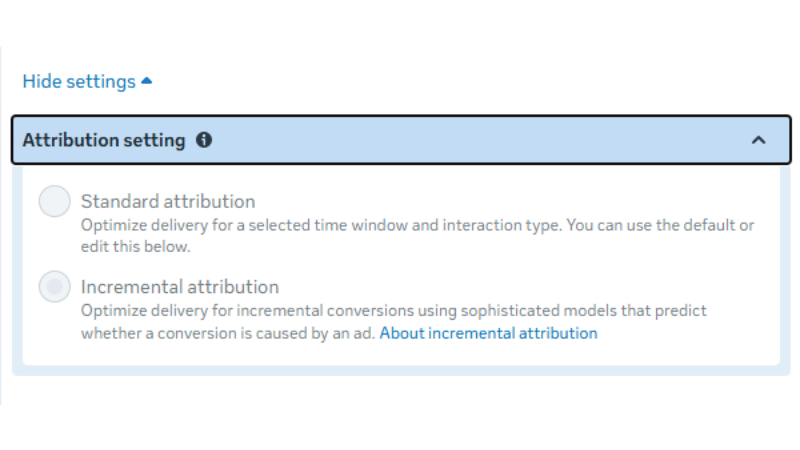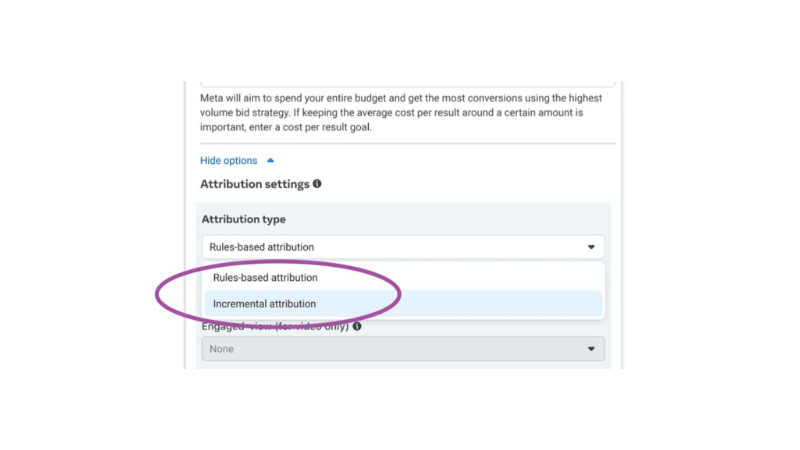Over the past few years, Facebook advertising has undergone significant changes, from its algorithm to its operational methods. These changes have made it difficult for many advertisers to know if their ads are actually effective and if they are truly helping their business.
In today’s blog post, we want to introduce you to a new feature from Meta called Incremental Attribution. This feature helps you see which orders or actions were genuinely driven by your Facebook ads, not just by chance. This gives advertisers a clearer picture of what’s working, which is especially important if you’re trying to make the most of your ad budget and ensure your ads are truly profitable.
If you’re still questioning your ROAS metrics and wondering, “How many of these conversions would have happened even without the ads?” then this article is for you. This blog will clearly explain the Incremental Attribution feature, its operating principles, and how this feature can help businesses that advertise on Meta. Now, let’s dive into the article.
First, we want you to have a clear understanding of the incremental attribution definition.
Incremental attribution defined

Incremental attribution is a new feature that is part of a series of improvements from Meta. This feature helps advertisers determine the real impact of their ads by isolating incremental conversions—meaning purchases or actions that would not have happened if the user had not been exposed to your ad.
This can be considered a highly effective improvement by Meta, as it’s a significant change from traditional attribution. Previously, advertisers could only measure what happened after an ad campaign started running. Incremental attribution measures the incremental lift, which answers the question, “What would have happened if the ad had never been shown?”
This might sound technical, but we’ll explain it to you in the simplest way possible: this feature helps calculate the true effectiveness of ad spend, providing deep insights into budget optimization, campaign strategy, and allocation across different channels.
How to set up incremental attribution in Ads Manager
Before we dive into how this feature works, we will guide you through setting up incremental attribution in Ads Manager.

By following these simple steps, you can enable the Incremental Attribution feature:
- Set up the campaign: Start by choosing a campaign objective such as Conversions, Product Catalog Sales, Leads, or Sales.
- Open advanced settings: In Ads Manager, go to the campaign settings and click on “Show more options” under the performance objective.
- Select Incremental attribution: Select the Incremental Attribution option, and Meta’s AI model will automatically take care of the rest.
How Facebook Ads incremental attribution works
Meta uses a lift-based approach with Holdout Testing. The process works as follows:
- A small portion of your target audience will not see the ad. This is called the “Holdout Group.”
- Meanwhile, the rest of the audience, known as the “Test Group,” still sees the ad as usual.
- Meta then compares the conversion behavior of these two groups—those who saw the ad and those who didn’t. By doing so, Meta can accurately calculate the incremental lift that your ad campaign delivers.
The mechanism behind Holdout Testing
Meta uses two main statistical techniques to analyze the results of the Holdout Testing:
Difference-in-Differences Analysis
This technique works as follows: Meta looks at the change in customer purchasing behavior before and after the ad runs. By comparing both the group that saw the ad and the group that didn’t, Meta can eliminate external factors (such as promotions or major events), thereby accurately determining the ad’s effectiveness.
Counterfactual Modeling
This technique is a bit more complex: Meta creates a model to predict what your sales would have been if you hadn’t run the ad. This is the “baseline” or your natural revenue level. Then, Meta compares your actual sales (with the ad running) to this baseline. The difference between the two numbers is the real effectiveness that the ad delivered.
The special thing about Meta’s Incremental Attribution is that the results are based not only on regular platform metrics but also on your actual transaction data. This gives you a more comprehensive view of the ad’s impact, not just on media performance but on the entire business, including results from other channels and natural effectiveness.
Why is incremental attribution important?
Many advertisers question, “Why is incremental attribution important?” So, let’s go over some of the strengths that make incremental attribution so crucial.
1. More accurate profit calculation: Instead of just looking at general numbers, this feature helps you know how much of your revenue and profit truly came from the ads. This gives you a more accurate ROAS (Return on Ad Spend) and POAS (Profit on Ad Spend) metric, which helps you make the right decisions.
2. Smarter budget allocation: Once you understand which ads are truly bringing in customers, you can focus your budget there. This helps optimize your spending, ensuring that every dollar spent delivers the best results.
3. Understand the root of the problem: You will no longer have to guess whether customers would have purchased without the ad. Instead, you will have a clear answer about the ad’s effectiveness and know exactly how the ad impacted the customer.
4. Easy to use: In the past, measuring incremental lift was very complex. Now, Meta has automated this process, making it accessible to every marketer, even beginners or those with limited budgets.
Conclusion
In summary, in an increasingly complex digital advertising landscape, moving from traditional measurement models to Incremental Attribution is a crucial step forward. With the ability to automate the measurement of true effectiveness, this new Meta feature not only helps you calculate a more accurate ROAS and POAS but also provides deep insight into the real impact of your ads on revenue. We hope that the information in this article will help you optimize your ads and profits, and allow you to allocate your ad budget in the most reasonable way possible.